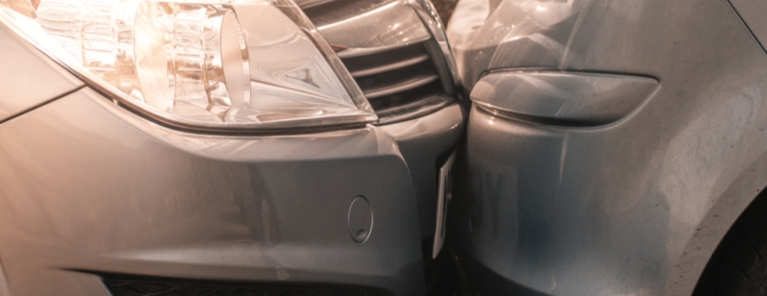
Features
Case Law
Opinion
Fleeing from accident to avoid theft charge is still a hit & run
Leaving the scene of an accident to avoid criminal liability for possessing a stolen vehicle still fits the main component for a Criminal Code hit and run charge, as we see in R. v. Seipp, 2018 SCC 01.
March 23, 2018 By Mike Novakowski

In this case, someone stole a car and other items during a break-in. The victim of the break-in drove around the neighbourhood in search of the stolen car. He saw Seipp driving it, caught up to the car and tried to overtake it in a roundabout. The two vehicles collided and Seipp fled the scene without providing either his name or address. Along with several offences related to the break-in, Seipp was charged with failure to stop and provide his name and address at the scene of an accident under s. 252 of the Criminal Code.
At trial in British Columbia Provincial Court, Seipp denied breaking into the home. Although he admitted to driving the car, he claimed that a friend of his unexpectedly stopped by his house and invited him to drive around in a car she had. He said he dropped his friend off and continued joyriding until the accident. He also testified that he fled from the collision because he suspected the car was stolen and therefore did not want to be present when the police arrived. Seipp was nevertheless convicted on the hit and run charge despite the judge finding he did not cause the accident. He was also convicted of possessing a stolen vehicle, fraud and using a stolen debit card.
Seipp appealed only his hit and run conviction to B.C.’s highest court on the basis that an essential element of the hit and run charge under s. 252(1) of the Criminal Code required proof of “intent to escape criminal or civil liability.” In his view, the proper interpretation of “escape civil or criminal liability” is that the intent must relate to avoiding liability in connection with the cause of an accident, rather than any liability arising from the general operation of a motor vehicle.
Seipp testified he fled because he did not want to be found with a stolen vehicle and, since the trial judge concluded that his driving was not the cause of the accident, he did not leave the scene to escape civil or criminal liability in relation to the accident.
The Crown submitted that the intention to escape civil or criminal liability must be related to or substantially connected to the accident.
In the Crown’s opinion, Seipp fled the scene to evade liability for driving a stolen car at the time of the accident. Although his manner of driving did not cause the accident, such that he could be held liable for the passenger’s injuries, his use of the stolen car was a factual cause of the accident. This, the Crown contended, was a sufficient link between the liability he sought to avoid and the collision to establish the mens rea for a hit and run offence.
The Court of Appeal found flight to avoid criminal liability for driving a vehicle (knowing it was stolen) also fit into the scale of liability connected to the accident.
“The object of the Code offence is to provide a penal incentive for a driver who is involved in an accident, regardless of whether they are at fault, to remain at the scene, provide their name and address, and offer assistance if another person appears to be injured or in need of assistance,” Justice Bennett said. “The liability a driver seeks to evade is not narrowly construed as solely arising from the consequences of the accident itself, but must also encompass offences connected to the driving, such as impaired driving, driving while suspended, criminal negligence, and dangerous driving.”
Seipp “did not want to be identified as the driver of the car, as he was knowingly in possession of a stolen automobile, and was driving it at the time he was involved in the accident,” Bennett continued. “His flight from the scene was to avoid criminal liability in connection with a vehicle he was driving at the time of the accident.”
So, even if Seipp’s explanation that he fled the scene to avoid being found in a stolen vehicle was accepted, the presumption of intent would not have been rebutted. Seipp’s appeal was dismissed and the B.C. Court of Appeal upheld his conviction.
Seipp again appealed, this time to Canada’s top court. But a nine-member panel of the Supreme Court rejected his argument. In a short oral judgement, Chief Justice Wagner, speaking for the full court, stated:
Mr. Seipp had control of a vehicle involved in an accident. He fled the scene without providing his name or address. In the absence of evidence to the contrary, this was proof of the requisite intent for the offence.
The evidence on which Mr. Seipp relies is that he fled the scene to avoid criminal liability for possession of a stolen vehicle. This is not evidence to the contrary. Rather, it is evidence that Mr. Seipp intended to avoid criminal or civil liability from his care, charge, or control of the vehicle involved in the accident. Such an intent falls within the ambit of the mens rea established by the expression “intent to escape civil or criminal liability” in s. 252(1).
Seipp’s appeal was dismissed.
* Editor’s note: Additional facts taken from R. v. Seipp, 2015 BCCA 54.
Mike Novakowski is Blue Line’s case law columnist. He can be contacted at caselaw@blueline.ca.
Print this page